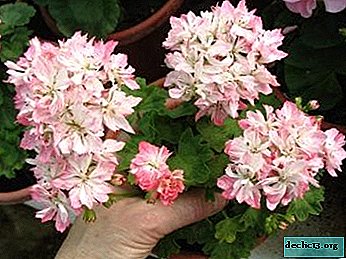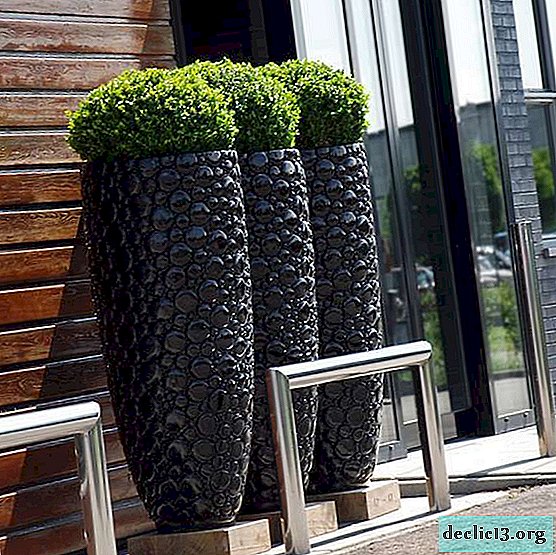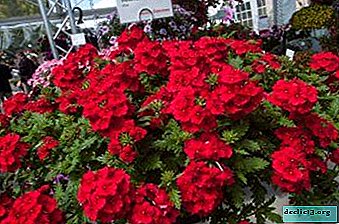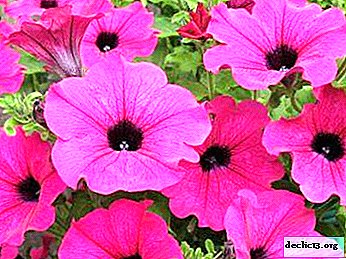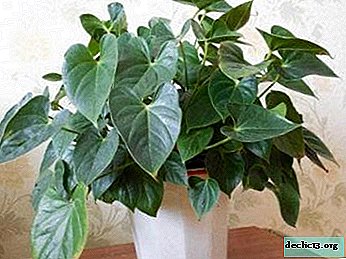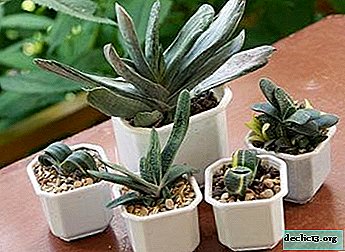Euphorbia flower Kristata - home care and plant photos
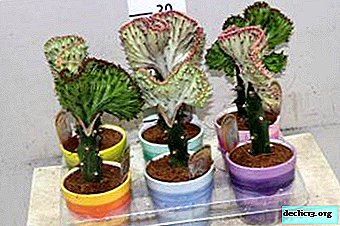
Euphorbia cristata is an amazing exotic succulent of the Euphorbia family, capable of growing both in wild conditions and open gardens, as well as in a room at home.
The non-standard look of this plant will give any home a touch of exoticism and show the awareness of its owner in botany. This variety is little known, although there are no special difficulties in its cultivation.
Next, you will find out what temperature, light is needed, how to water it, how exot propagates. And also what problems can arise with improper care.
Botanical Description
Euphorbia cristata is a very interesting plant in shape, which is a kind of dense scallop on a thick leg. The saturated bright green color of the leg clearly contrasts with the softly light scallop, whose color shimmers from milky white to light green. The spikes and the top of the crest are painted from pale pink to almost red. The leg is also protected by thin long spikes, not allowing it to get close to it.
In the wild and gardens, euphorbia has quite long dark green leaves, but at home they quickly dry out and die off by themselves.Like all members of this family, euphorbia Lactea has poison, in appearance similar to milk. Harmless in appearance, this poison can cause burns and poisoning, so you should be very careful in caring for it - wear protective gloves, keep it out of the reach of children and pets, and wash your hands thoroughly after contact.
Photo
The following are photos of the plant:




Home Care
Temperature
The thermophilic plant that appeared in us from the tropics of Asia does not tolerate cold, and in a room whose temperature will be below 15 degrees, it will die from the cold. But also it does not tolerate heat well - the succulent begins to lose leaves and can completely wither. You should not keep it in a room whose temperature is less than 20 degrees and more than 30, the ideal temperature for it is about 25 degrees.
Watering
Like many succulents, euphorbia cristata does not tolerate abundant watering, but also does not like drought. The soil should be slightly moist, but not too dry. The frequency of watering should be changed depending on the time of year. In warm time, from late spring to early autumn, it is worth watering once every 10 days, and in late winter, autumn and early spring not more than once a month.
Artificially increase the humidity around the plant, wiping it and spraying it, absolutely not worth doing - it starts to rot from this and can completely wither. Excessive watering can result in rotting of the roots and death of the succulent.Shine
Like many plants, euphorbia cristata does not tolerate shade, but does not like direct sunlight. However, artificial lighting will not replace her with sunlight, so you need to choose a place for succulent very carefully - do not overdo it with the light, but also do not let it suffer in the shade.
Pruning
For the main ridge to grow strong, you need to trim the plant, removing all unnecessary shoots from the stock. It is also necessary to clean and shoots from the crest. It is best to cut them barely appearing to less injure the plant.
Shoots can be cut off with a knife or secateurs, or broken off with your hands. If you are planning to do this manually, do not forget to take precautions and wear protective gloves, protecting yourself from the poison of euphorbia.
Top dressing
It is necessary to carefully approach the choice of top dressing for euphorbia. The plant should be fed in spring and summer, but do not overdo it with the frequency of fertilizers. Euphorbia should be fed no more than once a month.
Pot
It should be careful about the pot in which the flower will live. The plant should not be planted in an oversized pot. The soil is preferred for cacti. The bottom of the pot should be filled with drainage.
Breeding
 At home, the reproduction of cristata is possible exclusively by cuttings, in contrast to other representatives of this family.
At home, the reproduction of cristata is possible exclusively by cuttings, in contrast to other representatives of this family.
- Cut the stem from the plant and place it in warm water to let the poison contained in the flower flow out.
- Sprinkle with crushed charcoal to avoid bacteria and plant contamination.
- Leave the stalk to dry for two to three days.
- Drop it in a pot of wet sand. Keep the sprout in a bright place, however, avoiding direct sunlight at a comfortable temperature - at least 20 degrees.
- When the plant gives root, transplant it into a permanent pot with soil special for cacti.
Diseases
Since euphorbia is a poisonous plant, pests are not afraid of it, but there is another disease to which this plant is often exposed. Such a disease is rot, affecting a beautiful comb. The only way to cure it is to cut the rotting part to a healthy area without leaving a single piece of rot.
Conclusion
Euphorbia, albeit a poisonous and rather capricious plant care, is one of the most interesting specimens for professional gardeners and amateurs. Exotic comb in a pot can not leave anyone indifferent.

